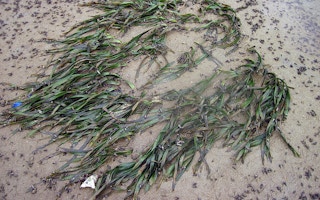What covers up to 600,000 square kilometers (230,000 square miles) of Earth’s surface, provides benefits worth an estimated US$570 billion each year, and is rapidly being lost due to human activity?
If you have not a clue, you’re far from alone. Scientists who study the underwater feature known as a seagrass meadow call it a “marginalised ecosystem” that ranks with coral reefs and mangrove swamps as among the most endangered marine habitats but is “often overlooked, regarded as merely an innocuous feature of the ocean.”
And they’re hoping that will change: The World Seagrass Association has released a statement urging the world’s conservation leaders to protect seagrass meadows from human harm through policies, education and action.
“These important ecosystems can no longer be ignored on the conservation agenda,” the statement says. “Seagrass loss should not be an option.”
Seagrasses are flowering plants that evolved from land-based counterparts millions of years ago. Vast swaths stretch along coastlines around the world, sheltering countless forms of marine life, from manatees and turtles to seahorses, shrimp and fish.
“
These important ecosystems can no longer be ignored on the conservation agenda. Seagrass loss should not be an option.”
World Seagrass Association
And they provide a spectrum of services to humans, including sequestering millions of metric tons of carbon each year, protecting shorelines, providing nurseries for marine life, contributing to global food security, supporting biodiversity and keeping ocean water clean.
But at the same time, humans are impairing their ability to do so through a perfect storm of onslaughts: runoff from cities, factories and farms; port construction and dredging; and food production activities such as trawling and aquaculture.
All told, the Ocean Health Index estimates the planet has lost more than one-quarter of all seagrass meadows since 1900. And as human population booms and coastlines develop, the destruction is accelerating — with particularly heavy losses being documented in such diverse settings as Singapore, Canada, the Caribbean and the British Isles.
Efforts by folks already in the know, such as reducing nutrients flowing from wastewater treatment plants and cropland, promoting sustainable fisheries, and replanting demolished meadows, have made some inroads into reducing the rate of decline.
By issuing the latest statement, scientists hope the rest of us will not only become aware of seagrass ecosystems, but do our part to protect them, too.
This story was published with permission from Ensia.com








